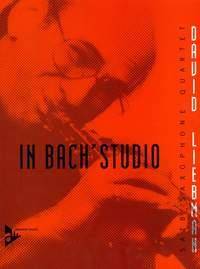- EAN13
- 9783892216742
- Éditeur
- ADVANCE
- Date de publication
- 1 janvier 2000
- Nombre de pages
- 24
- Dimensions
- 30,3 x 23,1 cm
- Poids
- 472 g
In Bach's Studio, 4 Saxophones (Satbar). Partition Et Parties.
David Liebman
ADVANCE
Prix public : 30,41 €
The Inspiration: In religion there is Mecca for Muslims, the Wall for Jews, the Holy Sepulchre for Christians and so on. These are places in the world where the vibrations are extremely intense and usually commemorate some historical person or event or special significance to a select population. Whenever possible, it is incumbent upon individuals who believe in something to make a pilgrimage to such a site. For musicians of all styles, one such place is the city of Leipzig, Germany. Specifically, it is the Thomaskirche, the church where Bach spent so many years as the choir master, pouring forth work after work for weekly masses and celebrations. While on tour during the mid-1990s with my group, we performed in Leipzig. The morning after our performance, pianist Phil Markowitz and myself went to that church. Fortuitously, an organist was practicing Bach at that very hour. Sitting there for a while, absorbing the feeling of the very room where so much creativity and beauty took place, was one of the highlights of my travels over the years. This piece was inspired by the master, J.S. Bach. The Composition: As befitting a piece dedicated to Bach, I composed a four-part chorale for the standard saxophone quartet. It is not a chorale in the formal sense, only expressively speaking. Using uneven bar lengths, I tried to create an unpredictable flow, since there is a preponderance of block chord movement. In concurrence with some of the ideas expressed in my book A Chromatic Approach to Jazz Melody and Harmony (Advance Music), I loosely followed along the lines of what I call interval categories. Letter A is built on seconds and thirds; letter B on fourths and fifths; letter C on seconds, thirds and especially sixths; letter D on seventh and ninths. For my aesthetic, each interval category portrays a unique expressive atmosphere. There is no overriding theme or chord progression. The composed solos are optional and will work well with the piece. Although I have provided some phrase and dynamic markings for these sections, those who do use the written material can freely interpret the music. On the other hand, if improvising musicians would like to express their unique talents, they should do so in each section, using the appropriate interval category as the basis for their improvisation. In any case, the short solos towards the end of the piece should be played as written. David Liebman´s career has spanned over three decades, beginning with his apprenticeship years in the early 1970s as a member of the Elvin Jones and Miles Davis Groups. Since then he has lead his own groups featuring musicians like John Scofield, Adam Nussbaum, Richie Beirach, Billy Hart and others. His present quartet features guitarist Vic Juris and has been together since 1991. He consistently places in the Top Five Soprano Saxophonists in the Downbeat Critic´s Poll. Liebman has recorded nearly 300 albums with nearly 100 under his leadership featuring several hundred original compositions in many different idioms including unusual arrangements of jazz standards, chamber music, big band, fusion and piano/saxophone duos. In jazz education he is a renowned lecturer and author of several milestone books translated into various languages as well as teaching videos and published chamber music. He is the Founder and Artistic Director of the International Association of Schools of Jazz (IASJ), an organization of jazz schools from over 40 countries. Awards include an Honorary Doctorate from the Sibelius Academy (Helsinki, Finland); Grammy nomination for Best Solo in 1998; induction into the International Association of Jazz Educators Hall of Fame in 2000. Instrumentation: 4 saxophones (SATBar)


















